#Utopia falls
Photo
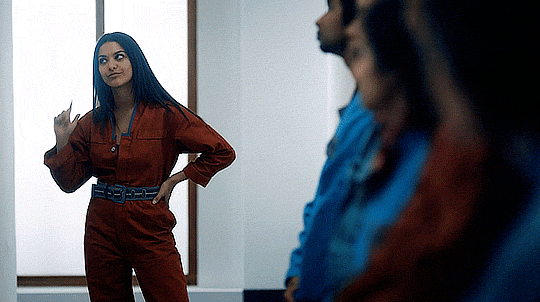

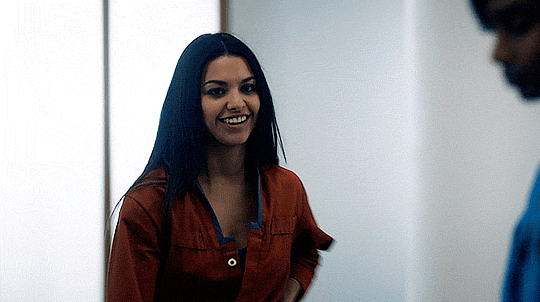
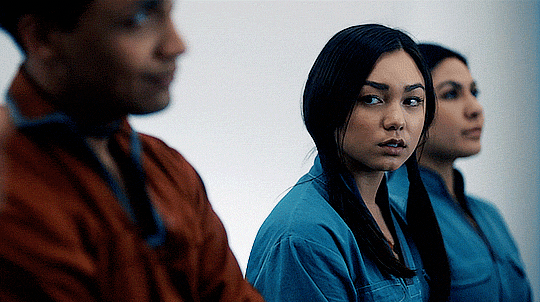
UTOPIA FALLS
1.01 - ‘The World is Yours’
#utopia falls#utopiafallsedit#cinematv#lgbtsource#wlwsource#userhekaates#sagelynedit#humberly gonzalez#devyn nekoda#humberlygonzalezedit#sagelyn#devynnekodaedit#sage x brooklyn#*
79 notes
·
View notes
Text
mags: bohdi! so happy you and aliyah made up. now do us all a favor and don't mess up with her again.
bohdi: why do you assume it was my fault?
mags: everything's your fault.
5 notes
·
View notes
Note
Hey, i saw your post about Devyn Nekoda 2nd time playing a sapphic role in Scream 6 and i want to ask what's her 1st role ? I can't typed in the comments, sorry for bothering you
Your good, she also played a character called Sage 5 on Utopia Falls. It’s on Hulu and only one season but I really enjoyed it.
5 notes
·
View notes
Text

Kate Drummond Utopia Falls (2020)
0 notes
Text

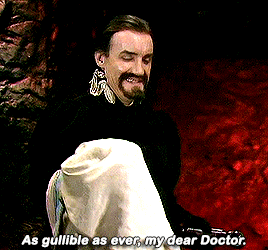

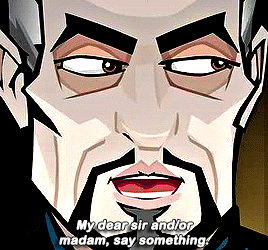
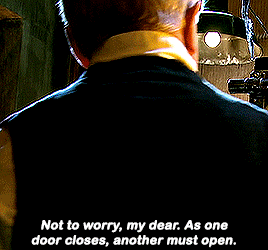
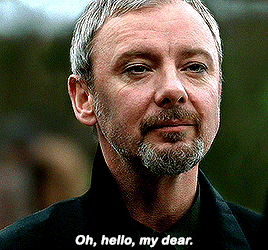


THREE YEARS OF THEMASTERGIFS
(November 5, 2020)
Dearest, I've been thinking. We need your TARDIS. We can't go up, but we can go down.
#dwedit#doctor who#parallels#multi#classic who#the time monster#time flight#the curse of fatal death#scream of the shalka#utopia#the doctor falls#the magician's apprentice#the timeless children#delgado!master#ainley!master#pryce!master#shalka!master#jacobi!master#simm!master#gomez!master#dhawan!master#ours#by lanie
1K notes
·
View notes
Text
the master is fucking around and the doctor is finding out (or rather, their companions are getting fucked around and finding out)
#this pattern reverses with doctor/companion dynamics#simm!master#gomez!master#dhawan!master#thoschei#tenth doctor#twelfth doctor#thirteenth doctor#this came to me in a flash#idk if it makes sense#doctor who#the master#the doctor#utopia#the sound of drums#last of the time lords#world enough and time#the doctor falls#death in heaven#dark water#spyfall#timeless children#power of the doctor#martha jones#wilfred mott#bill potts#clara oswin oswald#clara oswald#yazmin khan#yaz khan
63 notes
·
View notes
Text



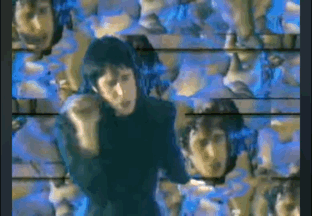






Todd Rundgren -Something to Fall Back On (1985)
#todd rundgren#something to fall back on#a cappella#1980s#80s#rockstar#currently my favorite music video#Todd with that Khon mask#folk rock#rock#this is so meme wtf#oddly good#nazz#utopia
33 notes
·
View notes
Text









Just remembering that I'm going absolutely feral every time I think about about Simm!Master
#he's so pretty in that shirt just after regeneration#and gorgeous as a bottle blond#and soooo handsome as an older dude#john simm just is everything#doctor who#the master#master doctor who#dr who#simm!master#john simm#simm master#doctor who the end of time#the doctor falls#doctor who utopia
9 notes
·
View notes
Text









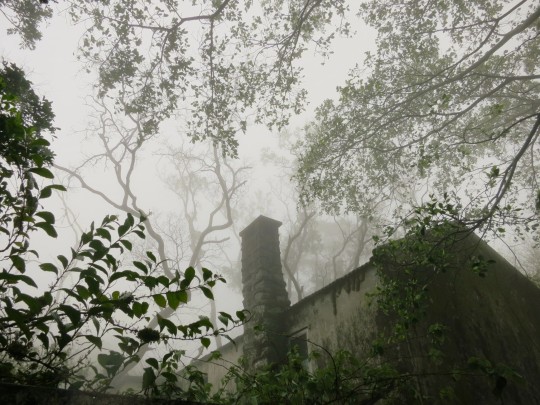
10 notes
·
View notes
Text
hanna: mona won't like this.
alison: who cares what mona thinks?
hanna: I do!
alison: that's a short list, hanna.
36 notes
·
View notes
Text
For anyone who's shocked by the Krakoan Era of X-men, the idea of the X-men creating their own nation, selling mutated plants as a way of achieving economic safety and living on an landmass of living fauna....actually isn't a new concept for them. Something similar happened in the Ultimate Universe.
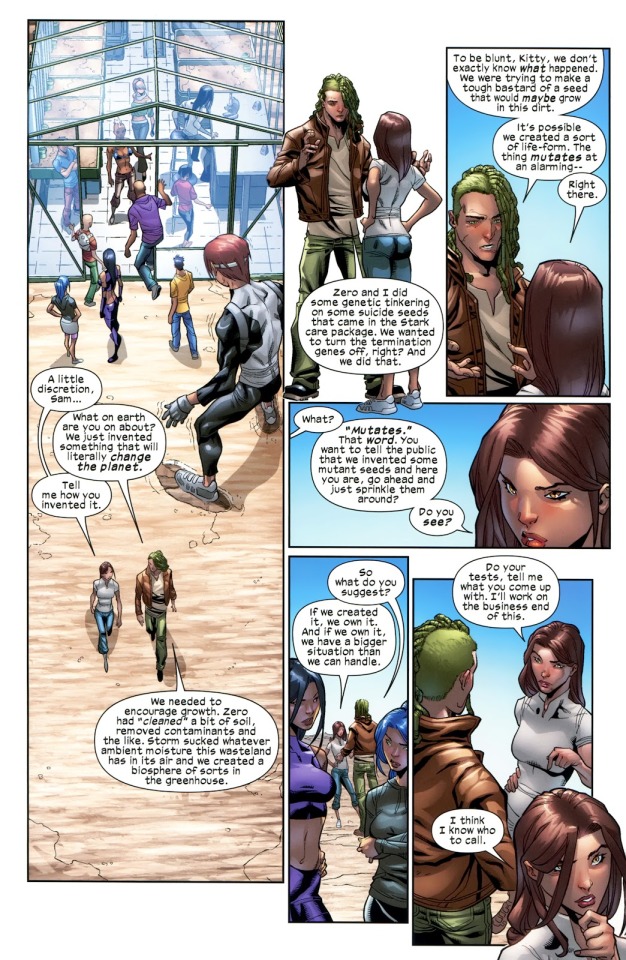

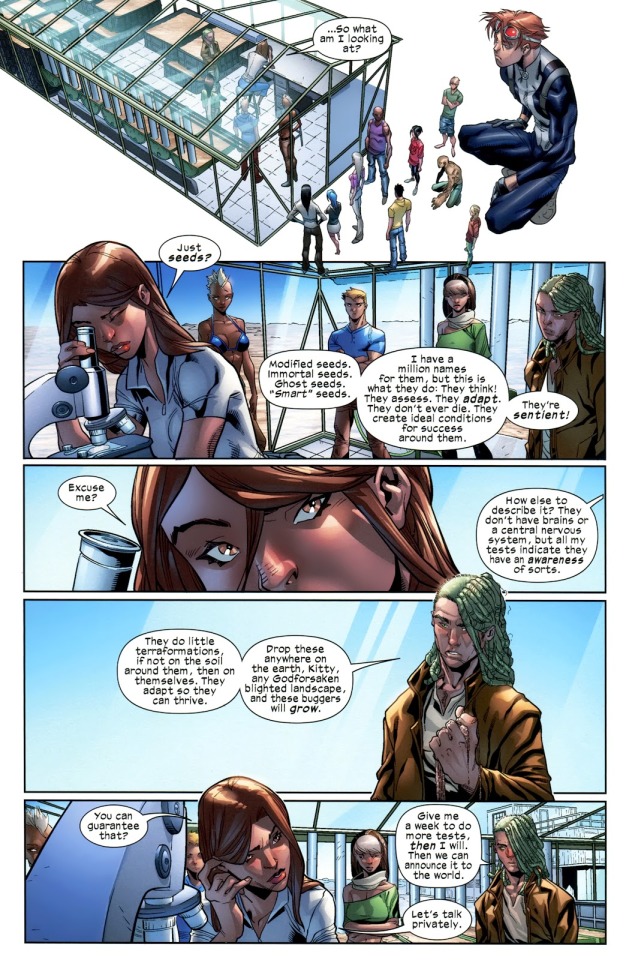



#X-men#Krakoa#Utopia#Ultimate X-men#House of X#Power of X#Dawn of X#Fall of X#Marvel#Marvel comics#Ultimate Universe
19 notes
·
View notes
Text
aliyah: you have something the tribunal doesn't have.
mags: integrity.
aliyah: what? no.
bohdi: yeah, you don't have integrity mags.
7 notes
·
View notes
Text
why is iamx so good at music that makes me feel like the world is ending
#posts#maybe not that exact feeling for all of the songs im thinking of but its good wording#songs i am thinking of: bernadette. music people. lulled by numbers. ghosts of utopia has the same intensity but a different feel#i love ghosts of utopia so so much btw i listen to it on loop often#anyways i started a playlist called ''something is deeply wrong'' with bernadette and lulled by numbers#it also has the woods by sam fermin and magic rabbit by my brightest diamond and jigsaw falling into place by radiohead#that one is slightly different but i love it dearly and its close enough#oh not on the playlist but definitely similar feeling is demoliton lovers#that one and the iamx songs are like. high drama and lyrics directed at one person. it does things to me
2 notes
·
View notes
Note
oh actually another question! kinda dumb tbh, but what does ultimate balance look like? cause ultimate chaos is just an overindulgence/ anarchy and ultimate order is a total lack of choices/ a dictatorship essentially, but idk I’m having a tuff time imagining ultimate balance…
I totes can, and no worries its not a dumb question at all :D
It took me a while to sort of figure out what exactly it what would mean, but to me ultimate balance is basically like a form of micromanagement, or really powerful overarching control- like in terms of a scale right, usually things go back and forth, sometimes tips to one side or the other, and adjustments are made to correct it (ie; or in mianite terms, how her brothers fight, but jordan brings them back center)
But in the case of true balance, that scale remains static, and is a kind of specified perfectionism that in aitheaca ianite strives to maintain. It kind of becomes a sort of order in a way, but different in that its that idealized middle ground between order and chaos. And while that could sound good in theory, the deterioration comes from the nuanced bad parts of true neutrality/"the perfect world" where there isn't room for like diversity, mistakes or imperfection, and the exploration of that
#so tldr its like a true neutrality thats a perfect balance between all things#a utopia that is unmoving that falls apart at the seams#if that makes sense i may just be rambling haha#lafakiwi talks#asks#licantropa#it sort of builds off what they started in season 2 about ianite going to the extremes to bring balance back to the world and causes the tai#the taint#like if she tried to play the literal hand of god 👀#mianite: the tales of aitheaca
7 notes
·
View notes
Text
‘psychiatrist’s field day’ you will always be famous
4 notes
·
View notes
Text
TOP 10 BEST MOVIES OF 2023
10) BEYOND UTOPIA
youtube
Sometimes real life can be scarier than fiction, especially when it comes to tyrannical countries like North Korea as highlighted by the gripping documentary Beyond Utopia. Drawing from real footage, director Madeliene Gavin brings us into a North Korean’ family’s fleeing the country, a Pastor working to get them to safety and a human rights activist’s desperate attempt to save her son.
Gavin gives us a glimpse into the living conditions locals are subjected to in North Korea. You see the propaganda used to demonized “Western Countries” and manipulate its citizens. The Government’s attempt to glamorize their country’s contradicted by the hidden footage of citizens digging through wreckage for any scraps. That pales in comparison to footage of prisoners being tortured.
All of this makes you pray for the family as they stumble across forests in complete darkness with no certainty, they will make it to safety. Thankfully, they have an ally in Pastor Seungeun Kim. Through his non-profit organization Caleb Mission, Kim works hard to ensure the family gets to safety.
Gavin portrays not only the external struggle to escape but also the internal struggle. Even though they’re fleeing the country, the family still believes the anti-US propaganda taught to them. As defector/activist Hyeonseo Lee says “Imagine, waking up one day and realizing that you were born on a completely different planet.” But Lee embodies the hope that they can be deprogrammed.
Beyond Utopia keeps you on the edge of your seat.
9) THE BOY AND THE HERON
youtube
Hayao Miyazaki once again comes out of retirement to create an animated feature destined to become a classic.
The Boy and the Heron highlights Miyazaki’s strength as a visual storyteller. He brings the same creative fantasy ideas that made Spirited Away, My Neighbour Totoro and Princess Mononoke. This time, he brings us an alternate world of anthropomorphic parakeets, marshmallow like spirits and the titular shape shifting Heron (Masaki Suba in Japanese, unrecognizable Robert Pattinson in English).
As always, Miyazaki and his animation crew lure us into fantasy through their dazzling animation. The Heron’s transformation is animated with slow detail, revealing one human feature at a time. That same detail goes toward the environments, which are animated with rich attention to detail. Whether it’s protagonist Mahito’s (Soma Santoki in Japanese, Luca Padovan in English) home, the underground library or the Gateway to the other side, every background is enchanting.
Miyazaki also has a knack for creating memorable characters. Mahito is not a bland boy hero but a troubled teen repressing his grief over his mother’s death. It gets to a point where he hurts himself with a rock. His personal life along has some engaging characters including his lovingly protective father (Takuya Kimura in Japanese: Christian Bale in English) and a group of nosy old women. And then there’s the Heron, a complicated untrustworthy character with uncertain motivations (at the start of the film at least) or a pyrokinetic girl (Yoshino Kimura in Japanese, Gemma Chan in English).
The film isn’t perfect. Miyazaki takes his sweet time before he gets to the plot, which may turn off some audience members not used to Miyazaki’s structure. The internal logic of the fantasy elements may be difficult to comprehend. Thankfully, that hasn’t stopped many moviegoers from enjoying the film.
At the core of the film is the lessons Miyazaki draws from the classic Japanese children’s book How do you Live? I won’t give too much away. I will say that the journey Mahito gives him an important lesson on accepting tragedy and how to move on with his life.
The Boy and the Heron delivers the enchanting fantasy that has made Hayao Miyazaki’s films so beloved.
8) GODZILLA MINUS ONE
youtube
Godzilla’s film history is quite strange. The iconic Kaiju began as an allegory for the nuclear bomb, bringing destruction and death to innocent people. Then it’s flip flopped between being a source of destruction and being a saviour of humanity while fighting/teaming up with other Kaijus. Now writer/director Takashi Yamazaki takes Godzilla back to its original source material with his surprise hit Godzilla Minus One. This time Yamazaki uses the iconic kaiju as an allegory for World War 2’s aftermath. Taking the place in postwar, the film focuses on a small group of former soldier and locals forced to take on Godzilla as it brings destruction to Japanese towns already devastated by the war.
Yamazaki delivers all the destruction you’d expect from a Godzilla movie, with one gripping action scene after another. One notable standout is a scene where a tugboat tries to get away from Godzilla. Yamazaki draws the original film acknowledging innocents lost and homes destroyed in Godzilla’s wake. He also gives Godzilla regenerative powers to add more stakes.
A frequent problem with most Godzilla movies is the human characters. With rare exceptions, their story arcs are never as interesting as the Kaiju fight scenes. The Monarch-verse is most notable, with the most interesting characters being killed off too early. Yamazaki breaks that cycle by paralleling the Godzilla elements with a realistic depiction of Postwar Japan. The result is a full cast of complex, relatable characters whose struggles to find a life within the wreckage makes the human stories as compelling as the action scenes.
At the centre of the storyline is Koichi Shikishima (Ryunosuke Kamiki), a kamikaze pilot wracked with guilt for surviving the war and failing to save a crew from Godzilla. Kamiki gives a compelling performance as a man coming to terms with survivor’s guilt. He’s surrounded by an array of engaging characters including Koichi’s minesweeping crew and his embattled neighbour Sumiko (Sakura Ando). Even if you take out Godzilla, their struggles to pick up the pieces of their devastated homes are still incredibly engaging. Through it all is a surprising message about the importance of life.
Godzilla Minus One became a surprise box office hit alongside The Boy and the Heron and both are very deserving.
7) FALLEN LEAVES
youtube
After a single date, Holappa (Jussi Vatanen) accidentally loses his date’s (Alma Poysti) phone number. To make matters worse, he doesn’t even remember her name. This sounds like a premise for a classic romantic comedy but, Aki Kaurismaki is not the type of writer/director who makes Hollywood romantic comedies. In fact, Fallen Leaves couldn’t be more different than said romantic comedies.
Kaurismaki brings his trademark style to create a deglamorized romantic comedy. While other romantic comedies star matinee idols whose characters have posh lifestyles and comfortable jobs, the leads in Kaurismaki’s films are middle aged, downtrodden folks working minimum wage labour. His date Ansa is a supermarket clerk who sorts recyclable plastic. Holappa is a construction worker who can’t keep a job due to his alcoholism. Plus, they live in run down apartments.
While other romantic comedies are filmed in glamorous locations shot with bright colours, Kaurismaki ‘s characters live in a world of run down apartments and seedy bars shot with muted colours. He also shoots at a distance as the leads stare off into sad sack space.
This may sound depressing, but underneath the droll look hides some serendipitous hope and dry humour. In a classic romantic comedy movie, Holappa spends evenings waiting by the movie theatre in hopes of finding Ansa. The journey also forces Holappa to confront his alcoholism. There’s also a delightful karaoke scene involving “Mambo Italiano.”
Kaurismaki’s films have a unique sense of hope. While most films try to reassure the audience that these characters will escape their poor circumstances, Kaurismaki has faith in his character’s ability to endure their circumstances. For Fallen Leaves, he assures the audience that they don’t need a fancy condominium or grand gestures to earn romance. At the film’s core is a belief that middle aged store clerks and construction workers are as deserving of love as the Ryan Goslings and Chris Evans of the world.
6) KILLERS OF THE FLOWER MOON
youtube
Martin Scorsese stares into the abyss that is American History with Killers of the Flower Moon, a biopic about the atrocious Osage Murders and the conspiracy behind it.
A lesser filmmaker would have gone the safe, white saviour direction by making it a crime drama centered on the agents investigating the murders. But Scorsese has always been a filmmaker who examined humanity’s dark side. So, he centres his film on an accomplice; Ernest Burkhart (Leonardo DiCaprio), war veteran who marries indigenous local Mollie (Lily Gladstone) whom his uncle William Hale (Robert De Niro) schemes to steal her fortune by murdering her family. While Ernest was worst in real life than portrayed in the movie, Scorsese and DiCaprio still makes a bold move in portraying Ernest as dimwitted moral weakling; a man repressing some guilt but is too easily manipulated to make the right decision.
De Niro delivers another masterful performance as the ultimate cinematic villain. He puts on a front of sympathetic ally for the Osage community but underneath his gentlemanly demeanor, he is a greedy, manipulative psychopath. The way he casually justifies his atrocious murder plot is disturbing. Just as disturbing is how many local authority figures were in on Hale’s plot as Scorsese and co-writer Eric Roth bringing hints through Ernest and William’s interactions. The normalization of white supremacy becomes disturbingly clear in one scene of Klan members marching in a parade.
But the key to the film is Mollie, who serves as a reminder of the human cost of Hale’s evil plot. As one family member after another is killed, Gladstone makes us feel Mollie’s pain. But through her ordeal, Gladstone maintains a sense of dignity for Mollie. It would have been appreciated if there was more of Mollie’s and the Osage people’s perspective. But again, Scorsese is more interested in people’s capacity for evil.
This film plays like a crime drama, but underneath the western demeanor is a horror film about a racist system designed to murder a group of people for the crime of striking it rich while Indigenous.
5) PAST LIVES
youtube
Writer/Director Celine Song begins her directorial debut with a distant shot of Nora (Greta Lee), her husband Arthur (John Magaro) and her estranged best friend Hae Sung (Teo Yoo) conversing at a bar. We don’t hear what they’re talking about, but we do hear unseen strangers gossiping about the protagonists. We hear them assume that Nora and Hae are a couple since they’re conversing the most while Arthur seems to sit by himself. Just from this scene, Past Lives has us under its spell.
At the core of the film is Nora’s relationship with Hae Sung. We first see them as childhood friends in South Korea before Nora’s family moves to North America. Decades later, Nora and Hae Sung reunite via video chats. Their lives have taken different paths with Nora becoming a happily married playwright in New York while Hae Sung has stayed in Korea to become an engineer. In their meetings together, Nora and Hae Sung rekindle the special bond they had.
Most films with this premise centre would lead to Nora and Hae Sung ending up back together in the end (usually after a series of misunderstandings). But Song isn’t here to make a Hollywood romance. Instead, she’s created a mature drama about two people reconciling with the circumstances that led them in different directions. In their conversations, Nora and Hae Sung ponder over the circumstances outside of and within their control that led them to the lives they had now. This leads them to face the dilemma of whether either can leave their current life behind and live together.
The performances achieve the balancing act of being both grounded and engaging. Yoo makes an excellent romantic lead delivering excellent chemistry with Lee. Magaro also deserves credit for his performance as the other man who allows Nora to figure her situation out while secretly hoping he doesn’t lose her in the process. But it’s Lee who makes this move, letting the audience in on Nora’s inner turmoil.
Celine Song’s career has taken a fascinating turn from a staff writer for The Wheel of Time to creating a haunting romantic drama about accepting the paths you’ve left behind.
4) THE HOLDOVERS
youtube
Alexander Payne is an expert in finding comedy in misery. He certainly has lot of misery to work with in The Holdovers, a bittersweet dramedy about Scrooge-like history professor (Paul Giamatti) forced to watch over a rebellious student (Dominic Sessa) abandoned by his parents at their boarding school on Christmas.
This film feels like a time capsule from the 1970s with vintage looking camera work by Eigil Bryld’s cinematography making the snowy background pop. David Hemingson’s screenplay itself feels like the kind of dramedy that would have been made by Mike Nichols or Hal Ashby with its dry comedic focus on character’s inner turmoil over social expectations.
The strength of Payne’s direction is how he makes us feel for the characters even when we’re laughing at their circumstances. Professor Paul Hunham (Giamatti) certainly comes off as a total stick in the mud when he forces the students left behind to continue their schoolwork during the Christmas holidays, but you come to realize this is his way of finding a sense of order as the world changes around him. His student Angus Tully (Sessa) may constantly be at odds with Hunham, and yet he’s the only student passing Hunham’s class. Cook Mary Lamb (Da’vine Joy Randolph) has a tough time opening up after her son’s death. As the film progresses, they start to open to each other, gaining a better understanding of each other’s struggles and force each other out of their comfort zones. Thankfully, Hemingson avoids the shmaltzy ending in favour of a bittersweet ending.
Of course, none of this would work without the cast. A lesser actors would have made Hundham and Angus unpleasant jerks. Thankfully, Giamatti brings a world weariness and masterful comedic timing to Hundham that allows us to empathize with him. Sessa shows a lot of potential in this role, bringing out the pain underneath the snarky energy. But it’s Randolph who gives the film its heart as Mary uses her job to avoid confronting her grief.
In a time that makes many people feel lonely, Payne has created a Christmas movie that celebrates unlikely human connections that empathy can create.
3) OPPENHEIMER
youtube
Nolan’s always been that rare filmmaker with the ambition to combine non-linear structures with labyrinth plotting while still being accessible to a moviegoer. Only Christopher Nolan could get away with making a 3 hour biopic about the theoretical physicist and then intertwin it with a courtroom drama about the senator who launched a smear campaign against him. If that wasn’t enough, he also shot half of it in black and white while making the whole movie on film. Not only does that but makes it a major event that results in a blockbuster. That is the miracle that is Oppenheimer, a compelling character study of the man who called himself the destroyer of worlds.
Half of the film follows J. Robert Oppenheimer (Cillian Murphy)’s journey from an arrogant Oxford student to the man racing against time to create the atom bomb to a physicist torn by the consequences of his action. In the process, we see many moments in Oppenheimer’s life including his attempted poisoning of a professor, his conversation with Albert Einstein (Bill Conti), his complicated relationship with his wife (Emily Blunt) and an interrogation by Roger Robb (Jason Clarke) just to name a few. And through it all, Nolan and Murphy reveal the many layers of this intelligent but conflicted man.
Oppenheimer’s story is intercut Lewis Strauss (Robert Downey Jr.), a senator who led a secret smear campaign against Oppenheimer over an apparent slight. While Oppenheimer’s section plays like a character study, Strauss’s storyline plays like a political courtroom drama of the 1960s complete with black and white cinematography. This serves as the central structure for the film as Nolan and editor Jennifer Lame intercuts between Strauss’s plotline and moments in Oppenheimer’s life. Downey Jr. truly shines in this performance as he reveals the deep seeded pettiness under Strauss’s polite demeanor.
Nolan balances these storylines with an intricate attention to detail that keeps the film engaging from beginning to end. He also surrounds Murphy and Downey Jr with an endless calvacade of stars including Matt Damon, Florence Pugh, Rami Malek and Gary OIdman just to name a few.
Of course, Nolan is known to avoid CGI whenever he can in favour of practical effects and he certainly keeps this principle with the testing of the atomic bomb, leading to a hauntingly beautiful scene.
Oppenheimer shines as bright as that atomic bomb, delivering an ambitious and haunting look at a man forced to live with creating a means of destroying the world he was trying to save.
2) POOR THINGS
youtube
Yorgos Lathimos closed out 2023 with one of the year’s horniest films. What are the odds it would be a Frankenstein-like satirical epic called Poor Things?
From the moment she is resurrected with a baby’s brain, Bella Baxter (Emma Stone) regards life’s pleasures like a kid in a candy store. And involves sex (even becoming an escort at one point). Meanwhile, many of the men try to seduce Bella only to be driven nuts by her lack of social etiquette and cluelessness. And through it all, Lanthimos mocks and interrogates the ideas of social norms with a Bunuel-esque satirical tone.
Poor Things serves as Lanthimos’ most visually stunning movie. He sets most of the first act in black and white, mostly in mad scientist Dr. Godwin Baxter’s (Willem Dafoe) home. The setting resembles the kind of prim European settings of Luis Bunuel. It’s when Bella is taken away by playboy gambler Duncan Wedderburn (scene-stealing Mark Ruffalo) that the settings truly pop with grand buildings and neon-coloured skies that look like they came out of a Terry Gilliam.
Lanthimos uses these grand sets to sneak in Bunuel-like satire mocking social mores, class systems and patriarchy. Watching the film, I kept being reminded of a film trope that infantilized women that you see from the likes of Lolita, Leeloo from the Fifth Element and most Marilyn Monroe Characters.[1] Some men in Bella’s life seemed to be attracted to (or want to take advantage of) her childlike innocence. But Lanthimos and Stone push the childlike behaviour to its furthest conclusion forcing the men to put up with Bella’s temper tantrums and social cluelessness. That behaviour causes Duncan to become hilariously unhinged as she destroys his life.
It's easy for a maverick filmmaker to find their style restricted when given a bigger budget. Thankfully, Lanthimos maintains his boundary pushing satire even on the most epic stage.
1) SPIDER-MAN: ACROSS THE SPIDER-VERSE
One can only image the pressure of making a sequel to an animated feature as groundbreaking and beloved as Spider-Man: Into the Spiderverse. Making a sequel already comes with its own challenge with the arduous task of expanding on the pervious material without becoming repetitive or losing the original’s appeal. It’s made more challenging when the first film changed the game of animated film. Spider-Man: Across the Spider-Verse not only meets the challenge head on but has elevated the franchise to create another action packed, side-splitting masterpiece.
Writers Phil Lord and Christopher Miller have long demonstrated a mastery with comedic storytelling through Clone High, 21 Jump Street and the Lego Movie. Even apart, they create unforgettable works with Lord co-writing Into the Spider-Verse with Rodney Rothman and Miller creating the criminally underrated series The Afterparty. All this work highlights their mastery of parodying genre tropes while creating compelling storytelling starring unforgettable characters. Joined by co-writer Dave Callaham, Lord and Miller take their boldness a step further by centering the first 15 minutes entirely on Gwen Stacy/Spider-Gwen/the Ghost Spider/Spider-Woman (Hailee Steinfeld). Her story arc would make an excellent movie on its own as she finds herself targeted by her father George Stacy (Shea Whigham), who blames Spider-Gwen for the death of her universe’s Peter Parker (Jack Quaid), not realizing that she and Gwen are the same person. And yet the writing trio manages to make this a compelling story while meshing it with the rest of Miles’ (Shameik Moore) storyline. Directors Joaquim Dos Santos, Kemp Powers and Justin K. Thompson also deserve credit for keeping the story focused while delivering pitch perfect entertainment from start to finish.
They all managed to do this while introducing an endless array of memorable characters from the damn near perfect Pavitr Prabhakar/Spider-Man India (Karan Soni) to snarky hologram Lyla (Greta Lee). Even the cameos are unforgettable with he likes of a live action Prowler (Donald Glover), Cowboy Spiderman called Web Slinger and even a Spider-Rex. But the most notable standouts are the villains. Miguel O’Hara/Spider-Man 2099 (Oscar Isaacs) starts out like an authoritarian who wants to maintain the status quo. But we come to understand his misguided need to maintain canonical events. And then there’s the Spot (Jason Schwartzman). He starts the film as a walking punchline but as he discovers his ability to travel across universes, he becomes an intimidating threat. And Kudos to the writers for turning a throwaway sight gag from the previous film into a character motivation.
Just as memorable are the gags, which come fast and furious in a variety of forms from easter eggs to one liner. You have Ben Reilly’s (Andy Sandberg) overdramatic moodiness, Pavitr’s calling out Miles over “Chai Tea” or Hobie Brown/Spider-Punk (Daniel Kaluuya) contradictory philosophy (“I don’t believe in consistency”). They work with every actor bouncing off each other with effortless timing.
And then there’s glorious animation. Directors Dos Santos, Powers, and Thompson along with their animators apply a variety of animation styles for each universe. They use a watercolor style that drips across Spider-Gwen’s universe. Spider-Punk is animated with a collage-like art style. There’s even a Lego universe animated by a 14-year-old. The directors and animators manage to keep a perfect balance of style and substance by using stylizations to enhance the story while delivering some awe-inspiring action scenes. That and the animation is so gorgeous that it must deserves to be in a theatre.
The writers and directors keep all the style grounded with parents and child relationships serving as the emotional core of the film. Miguel’s grief over the loss of his daughter unintentionally causes the destruction of a universe. Peter B. Parker (Jake Johnson) begins his responsibility as a father to Mayday who has inherited his powers. Of course, at the centre of it all is Mile’s and Gwen’s relationship with their parents. Miles need to hide his Spider-identity puts a strain on his relationship with his parents, forcing to face the dilemma of whether to reveal his identity. Unfortunately, Gwen’s story is more devastating when she’s forced to confront her father about her superhero identity.
Unfortunately, testimonies from former animators recently revealed Lord and Miller had led to a toxic work environment for the animators, forcing them to work 11 hours a day for 7 days a week, even overruling the directors. Consider this review a celebration for the directors and the animators. Hopefully, conditions are much better for the animators of the third film. This praise goes out to those animators who made this masterpiece work.
HONOURABLE MENTIONS:
ANATOMY OF A FALL
When her husband is found dead in front of their cabin, writer Sandra Voyter (Sandra Huller) finds herself charged with murder. We follow Sandra through a traumatic ordeal as every private problem is brought to the public eye and every little detail is scrutinized to make her look guilty. Huller gives a powerful performance as a grieving woman left with the painful task of proving her innocence.
BARBIE
In a summer overwrought with superhero movies and sequels, Greta Gerwig’s Barbie blew up the movie theatres like a pink-coloured supernova. About every element made this movie special from the colourful set pieces to the surprising commentary on the patriarchal society and performative feminism. Margot Robbie shines as a stereotypical barbie going through an existential crisis. Ryan Gosling steals the film as a childlike Ken desperate for Barbie’s attention.
It's not a perfect movie. It’s solution to undoing the Patriarchy is more of a first step than an actual solution.[2] The subplot with the Mattel businessmen gets resolved too easily. Beyond this, it’s still an entertaining movie.
STOP MAKING SENSE
The main reason this one’s not on the list is because this is a reissue of a 1984 concert movie. But it’s hard to leave out one of the greatest concert movies of all time.
Late director Jonathan Demme and David Byrne structured a Talking Heads concert in a unique and engaging manner. They start with a minimalist design by having David Byrne perform “Psycho Killer” alone on a barren stage with only a guitar and a boom box. Byrne manages to hook the audience with such a bare minimum. Then each band member appears on stage after each song. Before long, the one-man show becomes a New Wave orchestra complete with chorus girls, an array of keyboards and three giant screens.
Every band member is on their A game, bringing a lot of energy to all the songs. And let’s not forget Byrne’s iconic giant suit.
[1] Here’s a video that does a better job explaining this trope than I could.
youtube
[2] To be fair, this message could be meant for the younger audience.
#Top 10 movies of 2023#best movies of 2023#random richards#random richards reviews#anatomy of a fall#barbie#barbie 2023#barbie the movie#beyond utopia#spiderman#across the spiderverse#stop making sense#talking heads#poor things#oppenheimer#the holdovers#killers of the flower moon#fallen leaves#godzilla minus one#the boy and the heron#Youtube
2 notes
·
View notes